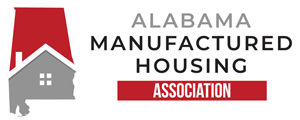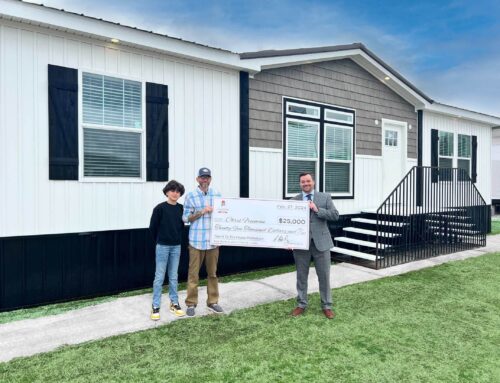
Relocating a Manufactured Home: What You Need to Know
Are you considering relocating your manufactured home? We’ve put together a list of things you need to know before you go.
Deciding to move can be an expensive endeavor, but if you’re the owner of a manufactured home, the cost and process of relocating your house are quite different than simply buying and moving into a new place. You might not have realized that manufactured homes are able to be relocated, but it’s true. Not only are they an affordable and quality housing option, but also manufactured homes afford homeowners the option to relocate without having to leave the home they’ve already settled in behind.
Manufactured homes with a U.S. Department of Housing and Urban Development certification label are built to efficient construction and safety standards that make them applicable to be relocated. However, each home and its movement should be handled on a case-by-case basis. You will need to consult with professional manufactured home movers to help you decide if you can and should move your home. Following, we explore some considerations you should make before relocating your manufactured home.
Moving Costs
The cost of relocating your home will depend on the size of the structure, location, and distance of the move. Elements such as labor, repairs, permits, land, utilities, and foundation changes are often overlooked, but can also add up quite quickly in the moving process.
An article by Moving.com states the following: For a single-wide move, handling the entire move – from transporting the home within 50 miles to acquiring the permits to hooking up the utilities – will run the customer somewhere around $8,000. For a double-wide home, the price usually falls between $10,000 and $13,000. These costs can include grade work, footers, electric, plumbing, the move and having the home set up at its new location. They do not, however, include factors such as permits and utilities, as mentioned above.
Limitations with Home Sizes
If your home is larger than a single section (meaning either a double-wide [1,344 sq. ft. to 2,432 sq. ft.] or triple section [2,016 sq. ft. to 2,970 sq. ft.]) it likely won’t be able to be transported to a new location in one piece. Larger homes would have to be sectioned into multiple pieces and reassembled at the new resting site.
Skilled manufactured home movers will inspect your home, remove the skirting and then split the home into two or three sections along the lines it was manufactured.
Once safely separated, the multiple sections will each be loaded onto a trailer and fastened securely for transport. When your home arrives at its new location, it will be lifted off the trailer and installed properly. Professional movers are familiar with the laws in each state for moving a home and should acquire the necessary transportation permits.
Working with Moving Companies
Finding the right moving company is a key proponent to this process. You’ll want to find a moving company with reputable experience in relocating manufactured homes. Make sure they carry the right insurance, are licensed to move homes in your state (and other states you might be passing through), can get all the necessary permits and bonds, and know whether or not an escort vehicle is needed during the transportation of your home.
Working with a mover who isn’t licensed or doesn’t get the right permits could end up costing a lot more in the long run. You can find a list of trusted manufactured home retailers throughout Alabama on the AMHA website. The professional retailers would be a good point of contact to begin inquiring about local and reputable moving companies.
Is Your Home in Good Condition?
Take into consideration when your home was built and what shape it is in before deciding to relocate your home. Some manufactured homes that are older or not in good condition may not be able to withstand a move. The moving company you work with will be able to help you make a safe and secure decision about whether or not your home should be moved and will be able to tell you what equipment might be needed to make the move possible.
Legal Matters & Zoning
Manufactured homes are installed to different standards based on location. HUD has divided the country into three different thermal zones, roof load zones, and wind zones. Manufactured homes must meet or exceed the standards of each area, so it is important to ensure that your home meets the standards of the new location in which you are moving it to
For example, if your home was built to wind zone 1 requirements, it can’t be moved to regions that have higher wind zone requirements, such as wind zone 2. If you do relocate your home, the local code officials in your new destination will verify that your home’s installation and construction comply with federal, state and local standards for construction and installation.
Post-Move Considerations
While the moving company will aim to be as careful as possible, it is still possible that damage might occur to your home during the transportation and relocation process.
Potential accidents and damage should be factored into the cost of moving a manufactured home. Check your homeowner’s insurance and the mover’s so that you can be clear on what factors will and won’t be covered.






